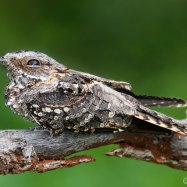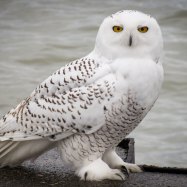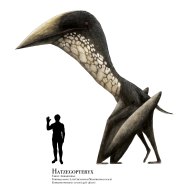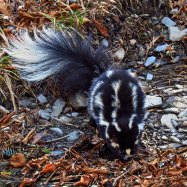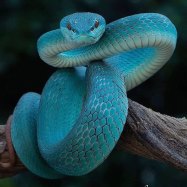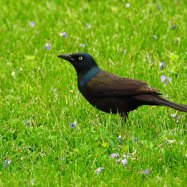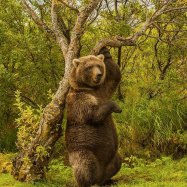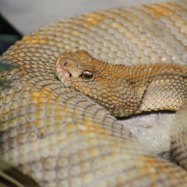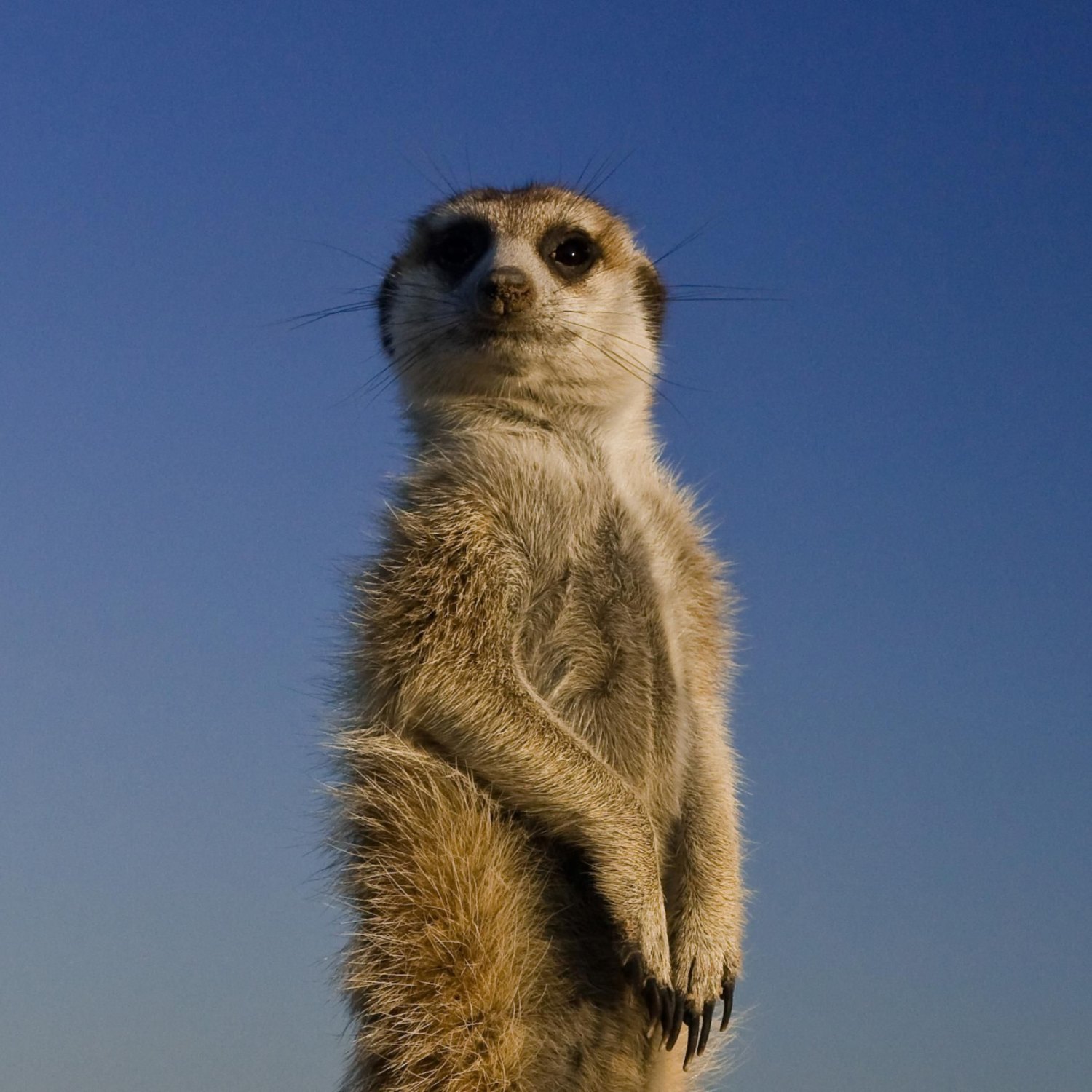
Meerkat
25-35 cm
Meerkats are fascinating creatures found in the Kalahari Desert. With a slender body shape, these cute animals belong to the Herpestidae family. They typically measure 25-35 cm in length and are known for their curious nature and strong social bonds. These charming creatures are often spotted foraging for food or standing guard on their hind legs. Keep an eye out for these lovable meerkats on your next visit to the desert! #meerkat #KalahariDesert #cuteanimals
Animal Details Summary:
Common Name: Meerkat
Kingdom: Animalia
Habitat: Deserts and grasslands
The Mighty Meerkats of Southern Africa
When you think of Africa, images of majestic elephants, fiercely roaring lions, and graceful giraffes may come to mind. But tucked away in the deserts and grasslands of Southern Africa is a small yet mighty creature that has captured the hearts of many – the meerkat.Scientifically known as Suricata suricatta, these small mammals belong to the animal kingdom, phylum Chordata, and class Mammalia. They are part of the carnivorous order Carnivora and belong to the family Herpestidae, which also includes mongooses Meerkat. With their adorable appearance, curious nature, and complex social structure, meerkats have become one of the most beloved animals in Africa and around the world.
A Home in the Desert
Meerkats are native to the dry, open lands of Southern Africa, particularly in Botswana, Namibia, and South Africa. They inhabit a variety of habitats such as deserts, grasslands, and scrublands, but their preferred home is in the Kalahari Desert.The Kalahari Desert is an arid region covering much of Botswana and parts of Namibia and South Africa. Despite its harsh environment, which includes extreme temperatures, limited water sources, and little vegetation, this desert is rich in wildlife. And at the heart of it all are the charismatic meerkats.
An Omnivore's Diet
Meerkats are opportunistic omnivores, meaning they will eat whatever is available in their habitat. Their diet primarily consists of insects such as beetles, spiders, scorpions, and termites. They are also known to eat small reptiles, mammals, and birds Madora Moth. In addition to animal protein, meerkats also supplement their diet with fruits, plants, and seeds.Their foraging skills are impressive, as they use their sharp claws and excellent eyesight to locate and capture their prey. These skills are essential for their survival in the harsh desert environment, where food can be scarce.
Adorable Appearance
Meerkats are undoubtedly some of the cutest animals in the animal kingdom. They are small, slender creatures, measuring between 25 to 35 centimeters in length. They have an average weight of 700 grams, making them about the size of a large squirrel.These mammals have light brown or grayish fur, which helps them blend in with their surroundings. They also have a dark stripe that runs across their back, giving them a unique appearance. Their appearance may seem unremarkable, but their body shape and features are perfectly suited for their lifestyle in the desert.
A Social Structure like No Other
One of the most fascinating aspects of meerkats is their complex social structure. These animals live in groups referred to as mobs or gangs, consisting of 2 to 50 individuals. Within the mob, there is a dominant breeding pair, which is the only pair allowed to reproduce. The other members of the group are responsible for helping raise and protect the young.Meerkats have a clear division of labor within their mob. The dominant female is the leader and is responsible for protecting her group. The dominant male takes on the role of a sentinel, standing on his haunches and scanning the surrounding area for potential danger.
The other members of the mob have specific tasks as well. Some are responsible for foraging for food, while others take care of the young and teach them essential survival skills. This social structure ensures the survival of the group and promotes cooperation and teamwork among its members.
Survival in the Desert
As mentioned earlier, the Kalahari Desert is a harsh environment for any living creature. However, meerkats have evolved to survive in this environment and have developed some incredible adaptations that allow them to thrive.Their keen eyesight and excellent sense of smell are crucial for locating prey and avoiding predators such as eagles, hawks, and snakes. They also have a unique resistance to venom, which is why they are not affected by the bites of venomous snakes and scorpions in their territory.
A Fascinating Family
Meerkats have a unique reproductive system where the dominant female is the only one who reproduces. She gives birth to an average of three pups, and the whole mob is responsible for raising them.The pups are born blind and helpless, so they must remain in the safety of their underground burrow for the first few weeks of their life. As they grow, the dominant female starts to bring them out of the burrow, where they learn crucial skills from the other members of the mob.
Meerkats have a relatively long lifespan for their size, with an average lifespan of 10 to 12 years in the wild. In captivity, they can live up to 14 years.
The Impact of Humans on Meerkats
While meerkats have been able to thrive in the harsh desert environment, human activities have started to impact their populations. Habitat destruction due to agriculture and urbanization is one of the major threats to their survival. They are also hunted for their fur, which is used for traditional medicine and their meat, which is considered a delicacy in some countries.Thankfully, there are efforts by conservationists and organizations to protect these charismatic creatures. The Kalahari Meerkat Project, established in 1993, has been studying the behavior and ecology of meerkats to better understand and conserve them.
In Conclusion
Meerkats may be small, but they are mighty and have captivated the hearts of many with their adorable appearance and unique social structure. These small mammals have evolved to survive in the harsh desert environment and have become an essential part of the ecosystem in the Kalahari Desert.With human intervention, habitat destruction, and hunting, these creatures face many challenges. But with the efforts of conservationists and organizations, we can ensure that the mighty meerkats continue to roam the deserts of Southern Africa for generations to come.

Meerkat
Animal Details Meerkat - Scientific Name: Suricata suricatta
- Category: Animals M
- Scientific Name: Suricata suricatta
- Common Name: Meerkat
- Kingdom: Animalia
- Phylum: Chordata
- Class: Mammalia
- Order: Carnivora
- Family: Herpestidae
- Habitat: Deserts and grasslands
- Feeding Method: Omnivorous
- Geographical Distribution: Southern Africa
- Country of Origin: Botswana, Namibia, South Africa
- Location: Kalahari Desert
- Animal Coloration: Light brown or grayish
- Body Shape: Slender
- Length: 25-35 cm
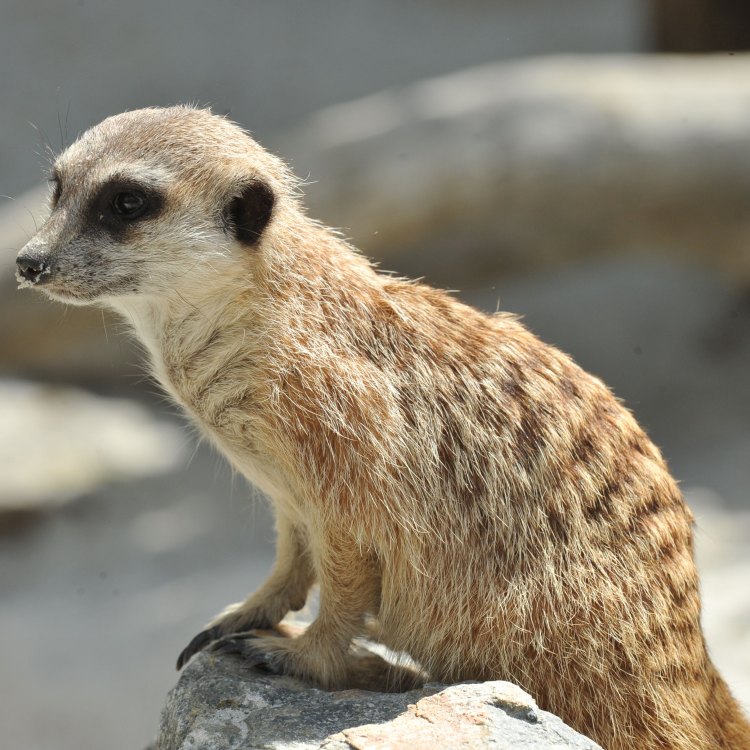
Meerkat
- Adult Size: 25-35 cm
- Average Lifespan: 12-14 years
- Reproduction: Sexual
- Reproductive Behavior: Breeding season in the summer
- Sound or Call: Chirping, barking, growling
- Migration Pattern: Non-migratory
- Social Groups: Highly social in groups called mobs or gangs
- Behavior: Cooperative, active during the day
- Threats: Predators, habitat loss
- Conservation Status: Least Concern
- Impact on Ecosystem: Seed dispersal, control of insect populations
- Human Use: Tourism, research
- Distinctive Features: Large eyes, long tail
- Interesting Facts: Meerkats are excellent diggers and live in underground burrows
- Predator: Birds of prey, snakes, jackals
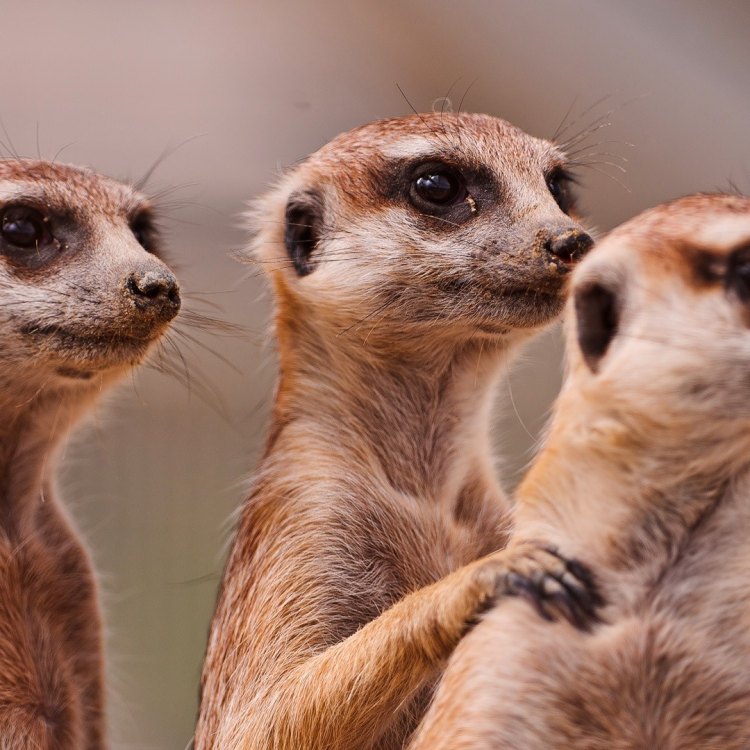
Suricata suricatta
The Surprising World of Meerkats
When we think of iconic African animals, images of majestic lions, graceful giraffes, and speedy zebras may come to mind. But there's one creature that often goes unnoticed in the safari landscape – the meerkat. These curious creatures may be small, but they have a fascinating and important role in the ecosystems of the African savannas. From their unique social structures to their impressive digger skills, there's more to meerkats than meets the eye PeaceOfAnimals.Com.Meerkats, also known as "suricate", belong to the mongoose family and are native to southern Africa. They have an adult size of 25-35 cm and an average lifespan of 12-14 years. But don't underestimate their size, as they make up for it with their impressive reproductive and social behaviors.
Unlike many other animals, meerkats have a sexual reproduction system, which means they have specific breeding seasons in the summer. This is when they become more active in finding a mate and reproducing. During this time, dominant female meerkats will have litters of 2-4 pups, and the entire group works together to take care of them. The younger meerkats in the group, known as "helpers", take on the role of babysitters and protectors for the pups while the adults are out foraging for food.
But what makes meerkats truly unique is their social organization. They live in groups called "mobs" or "gangs" that can consist of up to 30 individuals Moorhen. Within these groups, there's a strict social hierarchy, with an alpha male and alpha female as the leaders. The rest of the group members have specific roles and duties, such as guarding the territory, foraging for food, or taking care of the young.
During the day, meerkats are highly active. They can be seen running around, digging for food, or standing on their hind legs to scan for predators. And speaking of predators, meerkats face many threats in the wild, including birds of prey, snakes, and jackals. But they have evolved to have an efficient early warning system – one meerkat always stands guard while the others carry out their tasks. If a danger is spotted, the lookout will issue a loud chirping call to signal the group to flee to safety.
Despite these predators, meerkats are not considered a vulnerable species and have a conservation status of "Least Concern". However, like many other animals, their habitats are threatened by human activities such as habitat loss and destruction. This is why it's crucial to protect their natural living spaces to ensure their survival.
Aside from their role in the ecosystem, meerkats also have a direct impact on the environment. Their foraging habits distribute a variety of plant seeds across the savanna, contributing to seed dispersal and plant diversity. They also play a vital role in controlling the insect population, as their diet consists of insects and other small invertebrates.
Humans have also come to appreciate the charm of meerkats, making them a popular attraction for tourists and researchers alike. Many places in Southern Africa offer guided tours that allow visitors to observe meerkats in their natural habitat. These tours not only provide an unforgettable experience, but they also contribute to the local economy and conservation efforts.
One of the most distinctive features of meerkats is their large eyes, which give them excellent vision to spot predators and potential prey. They also have a long tail, which they often use to balance themselves while standing on their hind legs. But perhaps their most impressive feature is their ability to dig. Meerkats are skilled diggers and build extensive networks of underground burrows, often with multiple entrances and chambers. These burrows provide them with shelter from predators and the scorching African sun.
Despite their petite size, it's clear that meerkats are a force to be reckoned with. From their complex social structures to their unique digging and foraging abilities, they have carved out a unique niche in the African savannas. And by playing a crucial role in the ecosystem, they prove that even the smallest creatures can have a big impact. So the next time you're on a safari, don't forget to keep an eye out for these remarkable creatures – the meerkats.
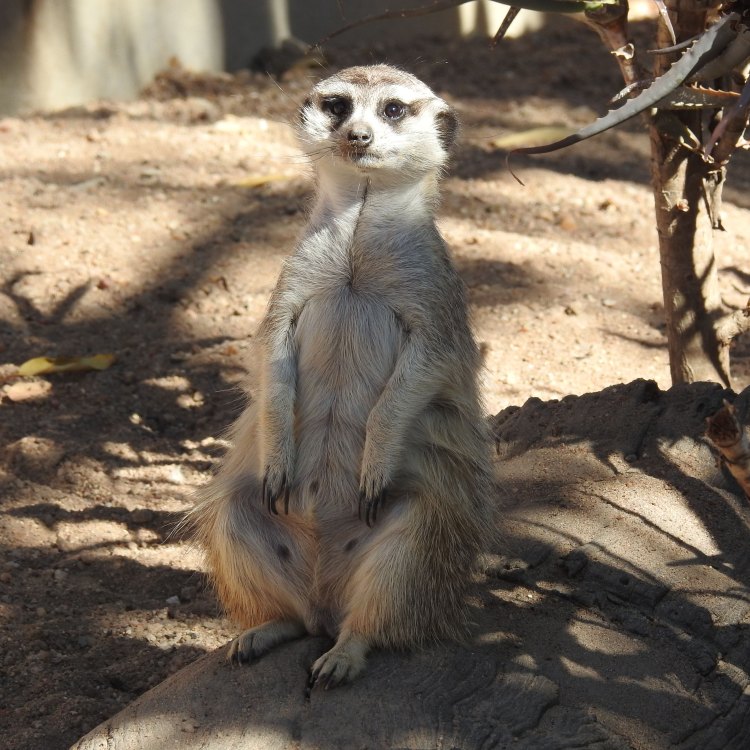
The Mighty Meerkats of Southern Africa
Disclaimer: The content provided is for informational purposes only. We cannot guarantee the accuracy of the information on this page 100%. All information provided here may change without prior notice.

